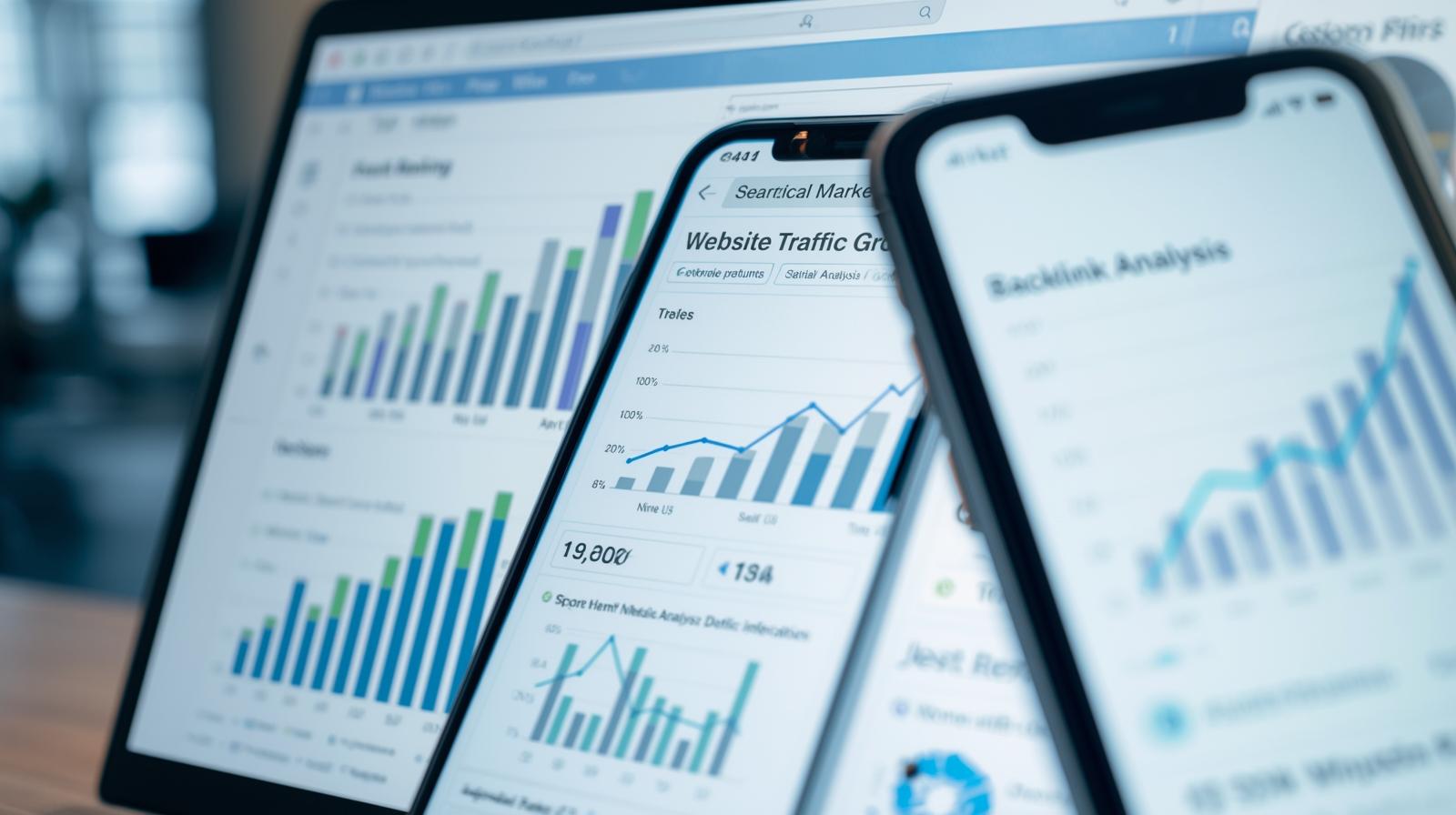With the rapid evolution of the digital marketplace, companies cannot afford to base decisions on guesswork or inconsistent marketing efforts. A well-structured digital marketing plan provides a roadmap to reach your audience, grow brand awareness, and drive measurable results.
Whether you’re a small business owner, marketer, or entrepreneur, understanding how to create a strategic digital marketing plan is crucial for long-term success. This guide walks you step by step through the process of building an effective digital marketing plan that aligns with your business goals.
Why You Need a Digital Marketing Plan
Before diving into the steps, it’s essential to understand why having a digital marketing plan matters. Without a plan, your marketing efforts risk being fragmented, inconsistent, and ineffective. A digital marketing plan helps you:
-
Align marketing initiatives with business objectives.
-
Understand your target audience and their needs.
-
Choose the right marketing channels for your brand.
-
Allocate budget efficiently.
-
Measure results and optimize campaigns over time.
Simply put, a digital marketing plan transforms marketing from guesswork into a structured, goal-oriented process that drives growth.

Step 1: Start Your Digital Marketing Plan with a SWOT Analysis
The first step in building a digital marketing plan is performing a SWOT analysis—an assessment of your business’s internal strengths and weaknesses, along with external opportunities and threats.
Strengths
Identify what your brand does well. This could include strong social media engagement, unique products, loyal customers, or a high-performing website. Knowing your strengths allows you to leverage them in your marketing campaigns.
Weaknesses
Evaluate areas where your marketing efforts fall short. Perhaps your SEO is underdeveloped, your content strategy is inconsistent, or you have limited advertising experience. Recognizing weaknesses helps you avoid repeating mistakes and guides investment in critical areas.
Opportunities
Look for emerging trends and market gaps that your brand can capitalize on. Opportunities might include expanding to new platforms, reaching untapped audiences, or introducing new digital tools for engagement.
Threats
Identify external factors that could hinder your marketing success, such as increasing competition, market saturation, or changing regulations. Awareness of threats allows you to develop strategies to mitigate risks.
Conducting a thorough SWOT analysis ensures your online marketing plan is grounded in reality and tailored to your business environment.

Step 2: Define Clear Goals and Objectives for Your Digital Campaigns
A strong digital marketing strategy begins with clear goals. Using the SMART framework ensures your objectives are Specific, Measurable, Achievable, Relevant, and Time-bound.
-
Specific: Clearly define what you want to achieve (e.g., increase website traffic by 30%).
-
Measurable: Include quantifiable metrics to track progress.
-
Achievable: Set realistic targets that match your resources.
-
Relevant: Align goals with broader business objectives.
-
Time-bound: Assign deadlines to create urgency and accountability.
Common goals in a digital marketing plan include increasing brand awareness, generating leads, improving conversion rates, or boosting customer engagement. Clear goals give your team direction and a basis for measuring success.
Step 3: Identify Your Target Audience
Understanding your audience is critical to any digital marketing plan. A well-defined target audience allows you to craft messages that resonate and choose the right channels for communication.
Build Buyer Personas
Create detailed buyer personas by considering demographics, interests, behavior patterns, pain points, and purchasing motivations. The more detailed your personas, the easier it is to tailor your marketing campaigns.
Conduct Market Research
Use tools like Google Analytics, social media insights, surveys, and competitor research to gather data. This helps you understand audience preferences, online behavior, and content consumption patterns.
By knowing your audience, your digital marketing plan can prioritize channels, messages, and content that engage the right people effectively.

Step 4: Choose the Right Digital Marketing Channels
A digital marketing plan is only effective if it reaches your audience through the right channels. Common digital marketing channels include:
-
Search Engine Optimization (SEO): Increase organic visibility on search engines.
-
Content Marketing: Blog posts, videos, eBooks, and infographics that provide value.
-
Social Media Marketing: Platforms like Facebook, Instagram, LinkedIn, and TikTok for engagement and brand awareness.
-
Email Marketing: Build relationships and drive conversions directly.
-
Paid Advertising: Google Ads, social media ads, and display ads to target specific audiences quickly.
When selecting channels, consider where your audience spends their time, your budget, and which platforms align with your marketing goals.
Step 5: Develop a Content Strategy
Content is the backbone of any successful digital marketing plan. A well-crafted content strategy ensures you consistently deliver relevant, engaging, and valuable material to your audience.
Types of Content
Include a mix of formats to cater to different audience preferences:
-
Blog articles for SEO and thought leadership
-
Videos for social media engagement
-
Infographics for easy visual communication
-
Ebooks or guides for lead generation
Content Calendar
Plan content publication in advance to maintain consistency. A content calendar helps coordinate topics, formats, and posting schedules across multiple channels.
A strong content strategy drives traffic, builds trust, and supports conversion objectives in your digital marketing plan.

Step 6: Set a Budget and Allocate Resources
A realistic budget is crucial for executing a online growth strategy. Your budget determines which channels, tools, and campaigns are feasible.
Consider the following:
-
Paid advertising costs for Google Ads, Facebook Ads, or LinkedIn Ads
-
Content creation expenses for videos, graphics, and blog articles
-
Marketing tools and software for SEO, email marketing, analytics, and automation
-
Human resources including in-house staff or external agencies
Allocating resources effectively ensures your digital marketing plan can be executed without overspending or stretching your team too thin.
Step 7: Implement Your Digital Marketing Plan
Once goals, audience, channels, and content are defined, it’s time to implement your internet marketing plan. Key steps include:
-
Creating and scheduling content
-
Launching campaigns across chosen channels
-
Coordinating team responsibilities
-
Ensuring all messaging aligns with brand identity
Implementation requires careful monitoring and coordination to avoid delays and ensure consistency across platforms.
Step 8: Optimize for SEO and Visibility
SEO is a critical element of any digital marketing plan. Optimizing your website and content helps increase visibility on search engines, attracting organic traffic without recurring advertising costs.
On-Page SEO
-
Use relevant keywords in titles, headings, meta descriptions, and content
-
Optimize images with descriptive alt text
-
Ensure mobile-friendly, fast-loading pages
Off-Page SEO
-
Build backlinks from authoritative websites
-
Engage in guest blogging or influencer collaborations
SEO optimization ensures your digital marketing plan drives sustainable growth and long-term visibility.

Step 9: Measure, Analyze, and Adjust Your Marketing Plan
A digital marketing plan is not static. Continuous measurement and analysis are essential for improvement.
Track Key Metrics
-
Website traffic and page views
-
Conversion rates and lead generation
-
Social media engagement and follower growth
-
ROI of paid campaigns
Analyze and Adjust
Use analytics to identify which strategies work and which need refinement. Adjust content, campaigns, and channels based on insights to maximize results. Continuous optimization ensures your digital marketing plan remains effective in a dynamic digital landscape.
Use Google Analytics tools to identify which strategies work and which need refinement.
Step 10: Maintain Flexibility and Iterate
Digital marketing evolves rapidly, and your digital marketing strategy should too. Stay flexible by:
-
Monitoring industry trends and competitor activities
-
Testing new channels and content formats
-
Updating your strategy based on performance and audience feedback
Iteration and flexibility help your plan remain relevant, efficient, and impactful over time.
Conclusion
Building a online marketing plan is a strategic process that transforms marketing from random activity into a structured, goal-oriented effort.
By following these steps—conducting a SWOT analysis, defining goals, understanding your audience, selecting channels, developing content, setting budgets, implementing campaigns, optimizing for SEO, measuring performance, and iterating—you can create a comprehensive plan that drives measurable growth.
A well-executed digital marketing plan not only increases visibility, engagement, and conversions but also ensures your marketing investments deliver the highest ROI. Whether you’re starting from scratch or refining existing efforts, following this step-by-step approach will empower your business to thrive in the digital age.


